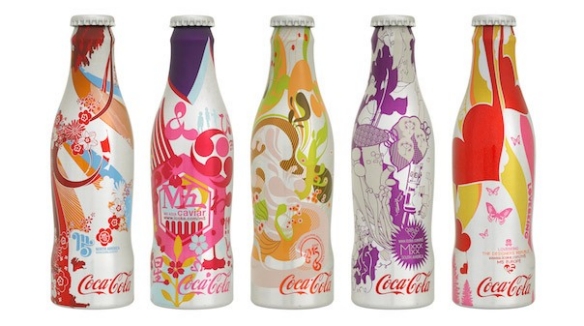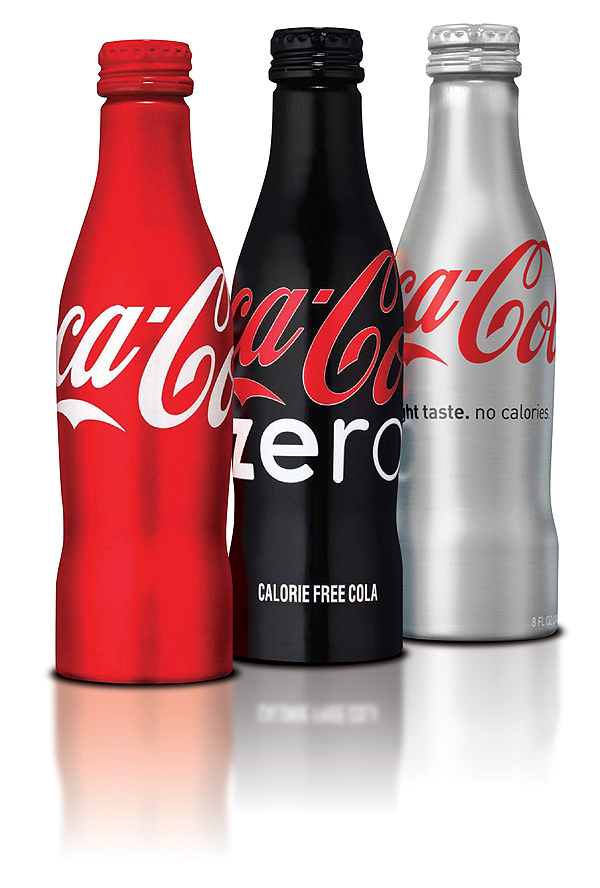PACKAGING
Coca-Cola's Embrace of Aluminium
Coca-Cola has announced it would be celebrating the 100th anniversary of its iconic glass bottle by expanding global production of a newer aluminium counterpart
November 24, 2015
The aluminium Coca-Cola bottle, first introduced in 2005, captures the signature contours of the historic glass bottle with a much lighter material.
With the tremendous success enjoyed by the aluminium bottle since its launch, the company now looks to it as a driver of future growth. As global supply chain director Debbie Haseley put it: "We're honoring our past while looking ahead."
Though Coca-Cola's 8.5 oz. fully recyclable aluminium bottles are now available in 45 countries, they were first launched as a limited edition set of five (featuring unique bottle graphics) as part of the company's "Magnificent Five" campaign.
Though Coca-Cola's 8.5 oz. fully recyclable aluminium bottles are now available in 45 countries, they were first launched as a limited edition set of five (featuring unique bottle graphics) as part of the company's "Magnificent Five" campaign.

Limited-edition collection of Coke and Diet Coke aluminum contour bottles
Illustrations on each bottle used UV-sensitive inks that revealed new motifs under a blacklight. These trademark aluminium bottles, used by the company to promote events such as the Olympic Games, rapidly became collector's items -- bottles from the 2010 Vancouver Winter Olympics have been put on sale for thousands of dollars online.
The contoured aluminium bottles may not look it, but creating them was an engineering feat in and of itself. According to Alejandro Santamaria (who helped design the bottles until 2014), "the aluminum contour bottle is the most difficult metal package in the world to make because of its shape… and aluminum is a very soft metal, so putting a cap on an aluminum bottle is incredibly challenging."
The contoured aluminium bottles may not look it, but creating them was an engineering feat in and of itself. According to Alejandro Santamaria (who helped design the bottles until 2014), "the aluminum contour bottle is the most difficult metal package in the world to make because of its shape… and aluminum is a very soft metal, so putting a cap on an aluminum bottle is incredibly challenging."
This premium, upscale package plays a clear strategic role in our sparkling package portfolio, while also allowing us to tell our brand story in meaningful ways throughout the year and deliver a heightened Coca-Cola drinking experience.
"Glass is much easier to cap -- it's rigid and hard. But when you're putting a soft closure on a soft metal bottle at a high speed -- holding the carbonation and at the same time making the bottle easy to open-- it's a delicate balancing act. Imagine having a combination safe and having to dial a number of knobs just right to unlock it… that's what this process was like." Coca-Cola managed the feat, however, and has steadily ramped up distribution to keep up with growing demand.
While the aluminium bottle lends style to the soda's packaging, aluminium cans have long been the standard for Coca-Cola products. On the whole, the world's population goes through 180 billion aluminium beverage cans a year (a great many of them containing Coca-Cola products).

Packaging soft drinks in aluminium is made possible by the addition of an epoxy coating, which lines the insides of the ubiquitous red and white cans. Without the protection of epoxy, the soda would corrode the metal cans in just three days. With it, however, Coca-Cola cans have made it to every corner of the globe.
